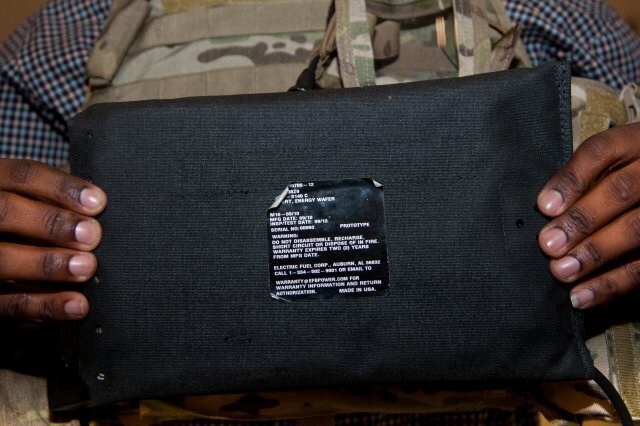Portable electronic devices have revolutionized warfare, but they've also burdened the soldiers with an increasing number of batteries that adds significantly to their load. To help lighten the load, the US Army Research, Development and Engineering Command's communications-electronics center (CERDEC) has developed a military-grade Universal Battery Charger (UBC) to help soldiers in the field keep their electronics powered up.
Ever since the invention of the walkie-talkie, soldiers have had more and more electronic gear added to their kit. Fast forward to today when the average US soldier carries 20 pounds (9 kg) of batteries on a 72-hour mission. It’s small wonder that soldiers tend to “lose” batteries on a long march. With the coming of the digital battlefield, things will only get worse.
"There is an increasing need with the networked soldier for portable power," said Dave Schimmel, Project Manager Soldier Warrior lead engineer. "There is a widening gap between the need for power and the actual availability of that power when the soldier is in the Tier-1 environment (the most austere environment, such as the remote areas of Afghanistan) so portable power is an absolute requirement."

What makes the situation worse is that the batteries aren't just heavy and bulky, they’re also a logistical nightmare. With soldiers needing so many batteries, keeping them in supply isn't easy and rechargeables aren't much help if they can’t be recharged. Worse, there are so many different batteries that recharging them in the field raises compatibility issues, the danger of damaging batteries and equipment, and the vexing question of what to do if there aren’t any chargers.
Currently, the Army Standard Battery Charger used by the US is either a vehicle-mounted or a tabletop unit about the size of a suitcase. Developed in the 1990s, it isn't very efficient and doesn’t work well with the latest military batteries. "We're taking that 1990s technology and shrinking it, bringing it into the 21st century," CERDEC Command, Power and Integration Directorate engineer Marc Gietter said. "It will keep up with today's technology."
The new UBC is an improvement on its predecessor, being the size of a shoe box and weighing only 6 lb (2.7 kg), so it can be carried by a soldier in the field. It will work with any power source from a generator to a car cigarette lighter and has a built-in solar panel for when no other energy source is available. Like any military-grade equipment, the UBC is ruggedized and waterproof to survive being hauled over rough terrain in all weather conditions.
As “universal” implies, the UBC can charge different kinds of batteries simultaneously. "The UBC can charge eight batteries and two USB devices at once," Gietter said. "The USB component is becoming increasingly important as the soldier moves toward being more connected via a smartphone. It also can charge a morale-boosting device like an iPod."

The UBC is also “smart” in that it can “talk” to today’s batteries, "Any battery today, much like the battery in a laptop or cell phone, is a smart battery," Gietter said. "The circuitry tells the charger how it wants to be charged, to do this and not do that. So now, these chargers are smart chargers and will respond to each individual battery."
The Universal Battery Charger is designed to work with the US Army’s Conformal Wearable Battery (CWB), which also continues to undergo refinement. This is a flexible battery integrated into the soldier’s uniform so that each pocket becomes a charging port. The CWB is lightweight, and bends to the shape of the body to free up room for other equipment that needs to be close at hand, such as torches and magazines.
"The conformal battery is the first flexible, full temperature range battery that will actually top-charge all C4ISR (Command, Control, Communications, Computers, Intelligence, Surveillance and Reconnaissance) technologies," said Ari Herman, a CERDEC Product Realization Directorate engineer. "A soldier can charge devices as they sit in the pockets of his vest, rather than having to swap in new batteries during combat.
The UBC is a collaboration between the Army Research Laboratory, Project Manager Soldier Warrior, the Communications-Electronics Command Logistics and Readiness Center, CERDEC Command, Power and Integration Directorate, and their industry partners.
Source: US Army







